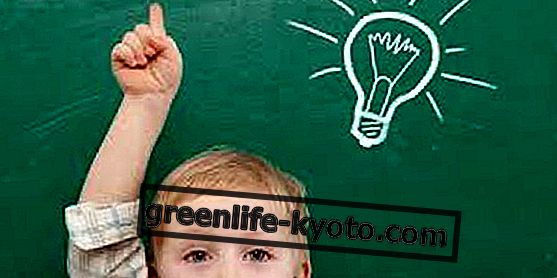
The myofascial meridians are intended as lines of traction internal to the body, defined by Mayers as structures in which the tension is distributed, created and moved, real bands that have not only to do with the insertion of the muscle but they also involve the nervous system and connective tissue. Let's find out better.
The vision of the body according to the myofascial meridians
Try to think that every single muscle is not solved. Try to imagine pulling a rag on one side and then on the other, as if there were a principle of total functional influence. If I throw a tablecloth up right, to say, something will happen both on the lower left and on the right. Each variation has an influence.
Explained in a very trivial way, this principle can make us a minimum enter into the logic of the myofascial meridians. Our body is inhabited by functional connections and our muscles should be considered as gears of a single unit.
Connections exist at the muscular, neurological and vascular levels . How to explain this in practice? Let's take a simple movement, as it could be to rotate the head. The splenius muscle takes care of it, the same one that allows us to stretch the neck, to extend it. Yet this muscle, from the point of view of the myofascial meridians, must be conceived as a portion of the myofascial chains, in detail the spiral and lateral ones.
In summary, this vision allows us to understand that our structure is truly holistic, truly continuous, truly integrated and that posture should go towards an orderly and harmonious integration, a true cosmos where everything is functional.
What are myofascial meridians
The term myofascial continuity describes that set of contiguous structures aligned within the structural network. A set of connected traits made of tendons and muscles. But because we talk about my band.
"Mio" stands for muscle tissue, in its banded nature, while "fascia" identifies its accompanying network of tissue. Going to touch, manipulate or work on nervous tissues also means moving vascular, epithelial ones.
In the human structure 12 myofascial continuities are found. Knowing the body to make the best use of it means being familiar with these "tracks" that traverse the depth of the body, like real railway shunting.
Next to the posterior superficial line joins the frontal one, the lateral one, the spiral one, together with the arm lines, the functional ones, the deep frontal line. The result is the so-called myofascial meridians that are not very different from those you see in the structures to delineate internally the weights and measures distributed along a sculpture of the classical Greco-Roman ones.
What are muscle belts and how to enable them
Physical exercise and myofascial meridians
A movement expert who has this anatomical and functional vision becomes an immediate "reader" of posture and structural analysis. A vision of the movement according to the myofascial meridians allows to work according to the helix path that is placed around the body .
By spiral line we mean a real band that connects through the upper part of the back each side of the skull to the opposite shoulder. It then continues around the ribs, crosses the navel, up to the ipsilateral hip. It runs through the thigh and tibia, passes under the foot and then travels along the back area, returning very close to where it started at skull level.
This means that the execution of all torsion and elongation movements can be read according to this scheme. If we think of a semilice stretching like that of the half moon (hanging with the trunk on one side in an upright position with the arms up, here is the whole lateral line spreads).
If we think of Trikonasana of yoga, the so-called "triangle" here goes to stretch the deep frontal line at the level of the leg to which we bend, the lateral line and the spiral line. Many yoga positions give a formidable stretch at the level of many lines. Even in many stretching positions of the purely Taoist meridians, benefit is obtained in this sense.
Even in many martial arts kicks there is a multiple lengthening of the lines and the same is true for falls that require quite a few twists.













